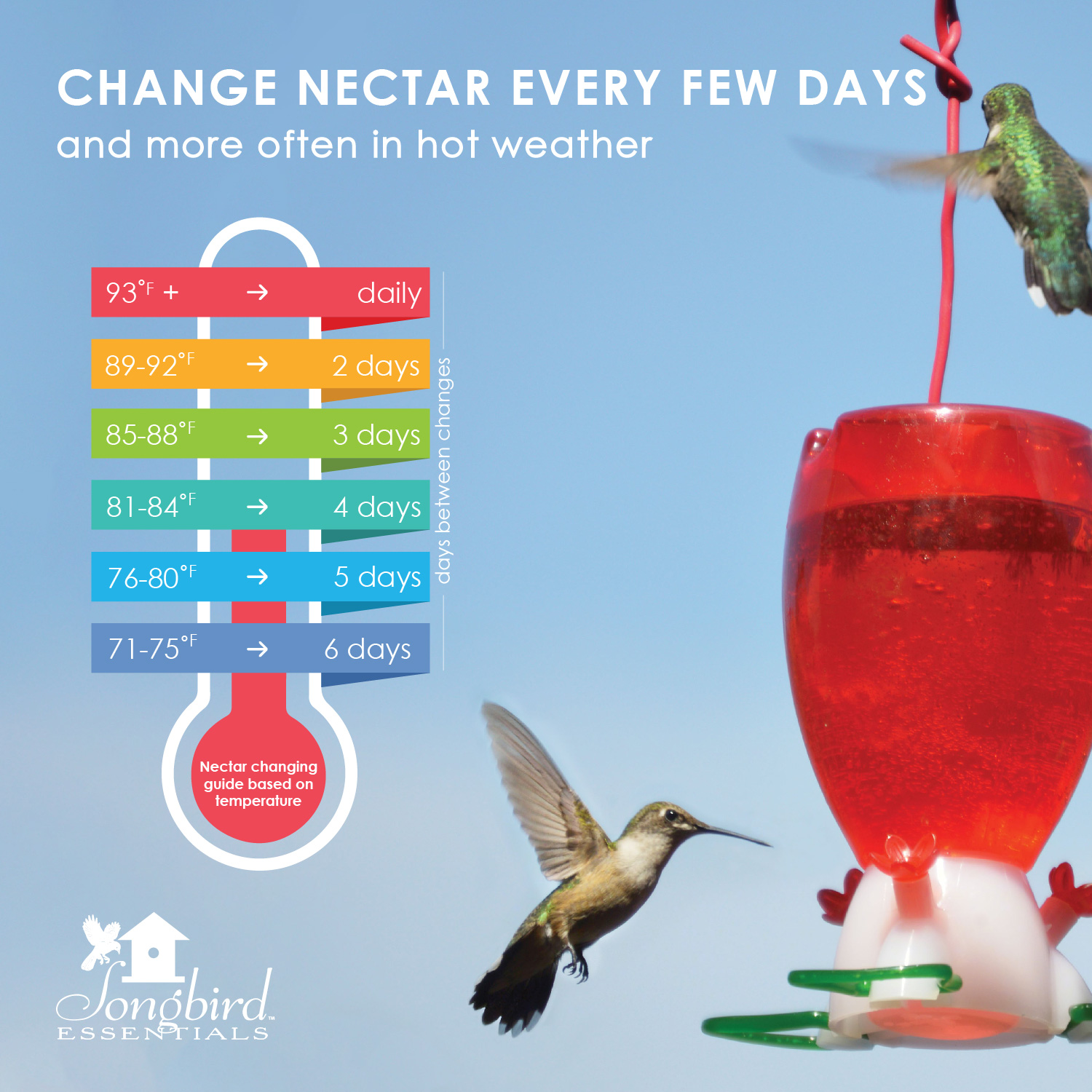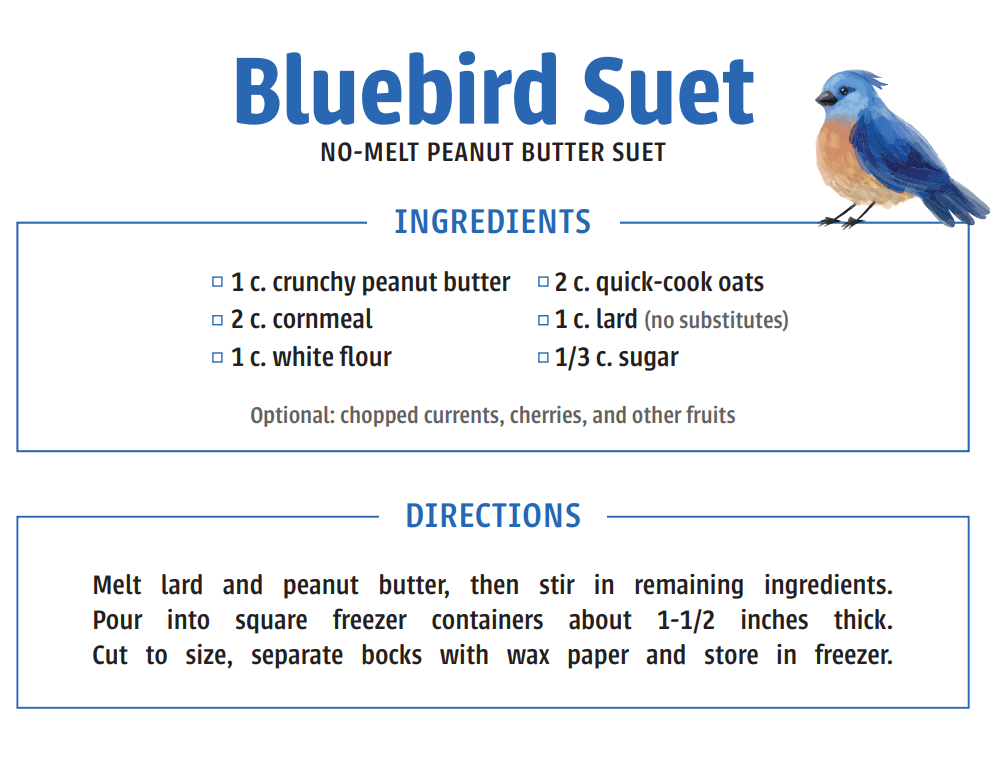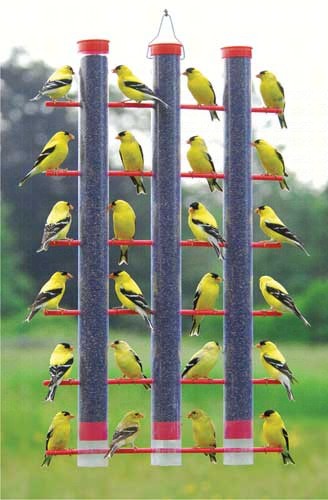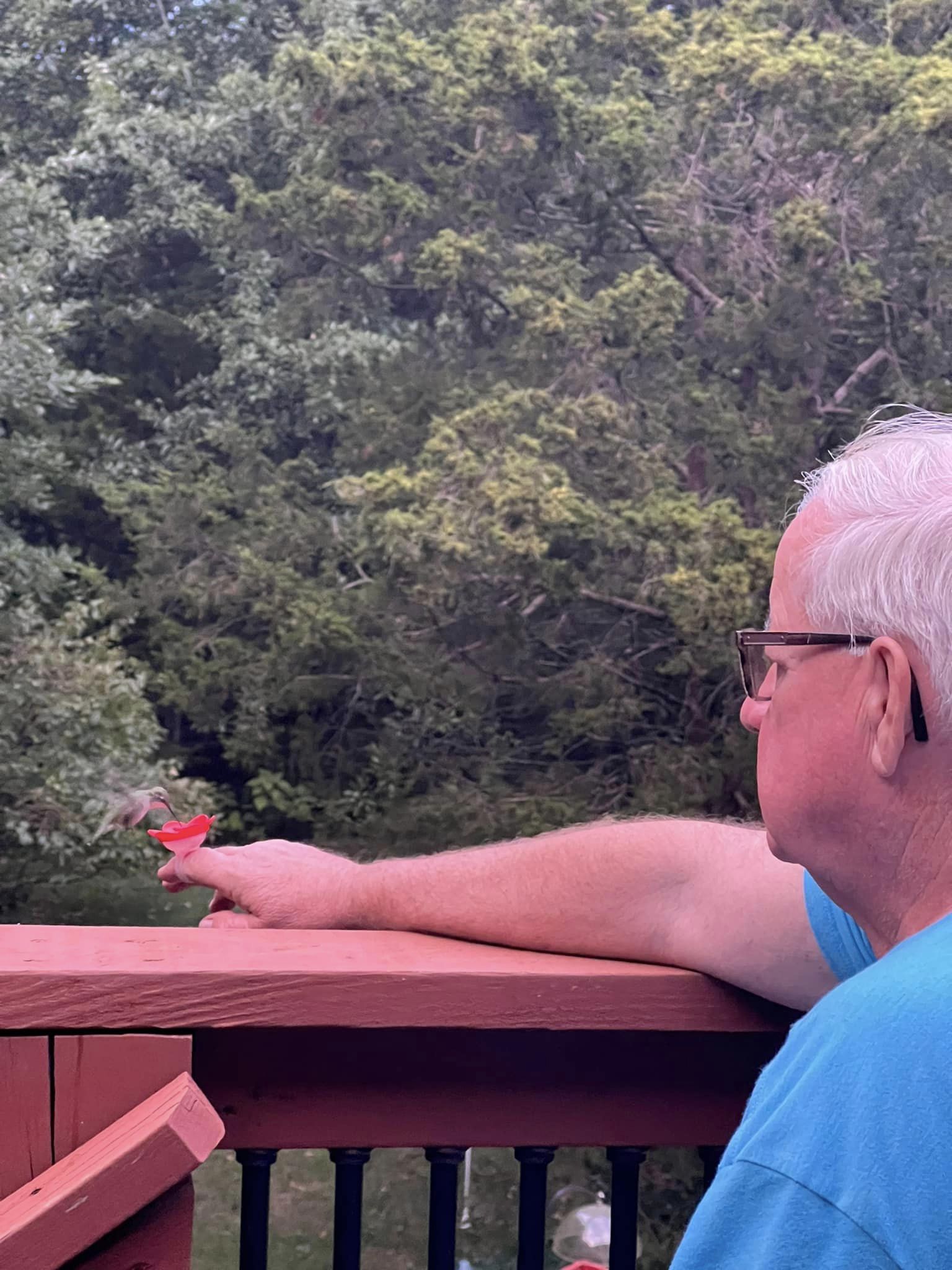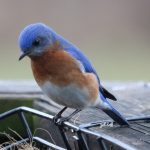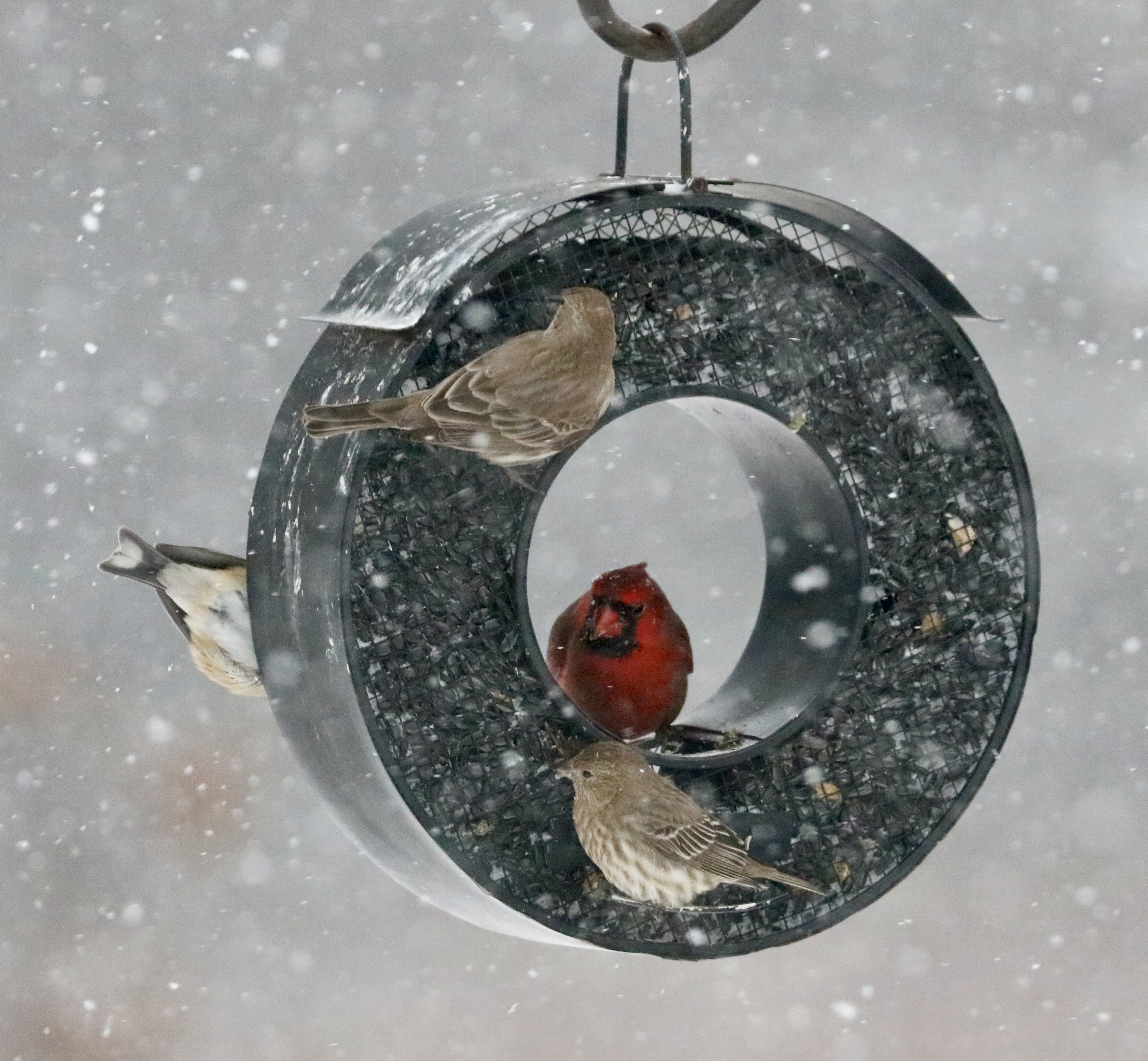
Provide the Best Possible Nutrition
Natural food is scarce in the winter so keeping your feeders stocked with food will help birds endure cold temperatures. Food quality directly affects a wild bird’s ability to stay warm and survive. It’s best to offer quality, high calorie, high-fat seeds, suet and nuts. Black oil sunflower, sunflower kernels and peanuts are all good sources of fats and calories. In the fall, let birds know they will have a reliable food source during harsh weather by consistantly filling your feeders when weather is mild.
Keep your feeders full, and consider offing seed in both hanging and ground feeders to serve the widest variety of birds. Many species prefer to eat at ground level. even when its snowy. These birds feel too exposed when they are high up and clinging to the feeder. For hanging feeders, select styles that have a top that overhangs the ports at a distance to keep the food and birds dry. If yours does not, separate baffles are available. Baffles hook onto the hanger of your current feeder and offer weather protection. To cater to ground feeding birds as well, choose a feeder that sits on the ground and fill it with the same types of foods you would offer in your hanging feeders. In the event of snow or ice, check your bird feeders and clear away anything that could block birds from feeding. Check feeders frequently, and as a reminder- NEVER feed bread! It offers ZERO nutrition and fills a bird’ belly with worthless bulk-robbing them of the nutrition they need to stay warm.
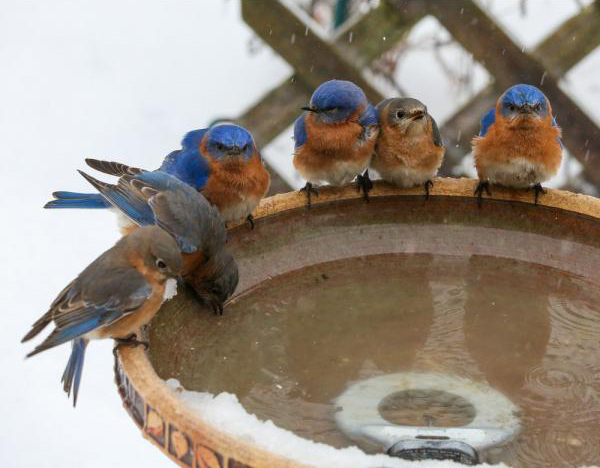
Maintain an Ice Free Water Source
Water is critical. In the winter, more than any other time of year, birds need fresh, unfrozen water. They need it to digest seed as well as to preen to keep their feathers clean. Clean feathers make for the best insulation to maintain their body heat. While they are able to find some water in natural food sources like insects, berries, and even snow, when those supplies dwindle, the water you supply is even more vital. For Finches, who only eat seed, having a water supply is critical year-round. Choose a birdbath with a hard plastic bowl, which can hold up to the expanding and contracting that is typical in cold weather. Additionally, choose one with a rough surfaced bottom so birds have something to grip. Consider a bath that contains a built-in heater system to keep water thawed. If yours does not have this, you may purchase one separately that is safe when submersed in water – as long as you use a quality extension cord to plug it in. Our birdbath heaters and heated baths with cost only pennies a day in electrical cost. They are thermostatically controlled so they only come on when temperatures are approaching the freezing mark.
If you don’t have a bath, even a shallow planter saucer will work as a temporary stand-in. Fill with warm water and as it freezes pour hot water over the iced top. Don’t whack it to crack the ice- you may break your saucer!
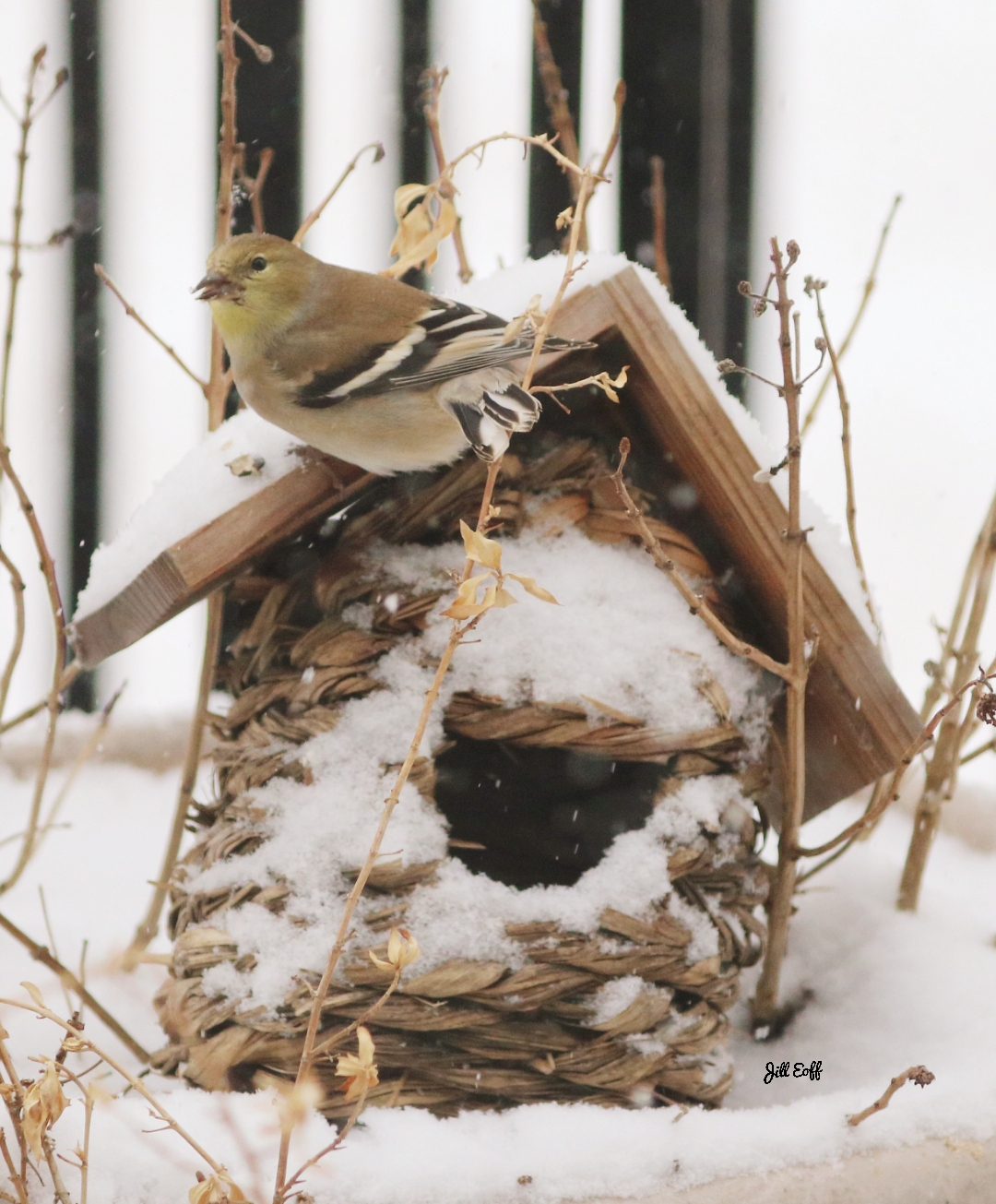
Offer Shelter
Just like food and water, an adequate shelter can be more difficult to find during winter. The only reprieve birds have from the cold is if they are able to find a crevice or hole where they can hunker down. These natural shelters can be few and far between and many birds will struggle to find one. For this reason, providing shelter for birds in the harsh weather is extremely important.
One obvious way to offer shelter to your feathered friends is to put up a birdhouse. These can help keep birds warm and provide much needed refuge from harsh storms, wind, freezing rain, heavy snow and the bitter cold. Make sure your existing houses are cleaned out and accessible for overnight roosting. These houses can literally provide shelter from the storm, giving birds a place to huddle together.
Roosting Pockets, like the one above, also make a great option. These pockets are made from all natural materials and blend in well with their surroundings, keeping your birds safe from predators as well as warm. hang a few in the shelter of tree branches and out of prevailing winds.
Another option is to place a roosting box outside. Instead, of an opening near the top, the birds enter the box via an opening near the bottom. Having the hole at the bottom allows heat to be trapped near the top of the box, where birds roost. It also helps to keep snow from blowing into the box. Some bird houses can be converted to roosting boxes in the winter by turning the entry panel over so the entrance is near the bottom. We offer a Convertible Roosting House that converts to a Bluebird House in the spring. No matter which type of shelter you choose, make sure it is in close proximity to you feeder so the birds are able to dart back and forth in harsh weather and cold temperatures.



